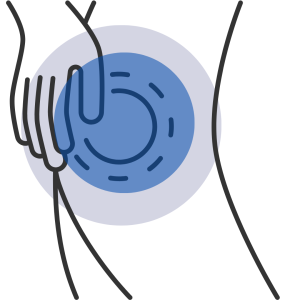
AVASCULAR NECROSIS
Avascular necrosis refers to a condition in which a tissue or organ undergoes cell death due to reduced or complete cessation of blood flow. The term “avascular” indicates that problems with blood vessels are at the root of this condition. It can develop in any body part, but often affects areas such as the large joint heads, shoulders, hips and knees. Avascular necrosis occurs because the affected area does not get enough oxygen and nutrients.
Causes:
Disruption of Blood Flow:
Blockages in blood vessels, embolisms or narrowing of blood vessels can cause tissues to not receive enough blood.
Sudden Decrease in Blood Pressure:
Sudden drops in blood pressure can impair blood flow, especially by increasing pressure on large vessels.
High Cholesterol and Hypertension:
High cholesterol levels and high blood pressure can cause arteriosclerosis and blockages, increasing the risk of avascular necrosis.
Bone Fractures or Joint Injuries:
Bone fractures or joint injuries can affect blood flow, leading to avascular necrosis.
Chronic Alcohol Use:
Chronic Alcohol Use.
Symptoms:
Pain:
Pain in the affected area is one of the early signs of avascular necrosis.
Movement Restriction:
Avascular necrosis can cause limitation of movement as it usually affects joint areas.
Swelling and Sensitivity:
Damage to tissues can trigger swelling and tenderness in the affected area.
Limping:
Limping may occur due to pain and restriction of movement in the joints.
Treatment Methods:
Medicines:
Medicines to reduce pain and inflammation can support the treatment process.
Physical Therapy: Physiotherapists can implement specific exercise programs to increase range of motion and improve muscle strength.
Orthotics and Support:
Specially designed shoes, splints or other orthoses that provide support in the affected area can be used.
Bone Graft and Surgery:
In advanced cases, surgery may be required to correct bone damage caused by avascular necrosis.
Vascular Surgery:
Surgical interventions may be considered to correct blockages in the vessel or to improve blood flow.
Avascular necrosis can be managed with early diagnosis and treatment. However, treatment options vary depending on the patient’s condition, the severity of the necrosis and the area it affects.




.png)
.png)
.png)